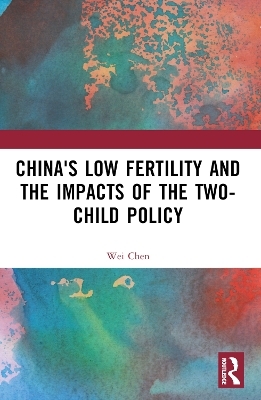
China's Low Fertility and the Impacts of the Two-Child Policy
Routledge (Verlag)
978-1-032-55235-4 (ISBN)
- Lieferbar (Termin unbekannt)
- Versandkostenfrei innerhalb Deutschlands
- Auch auf Rechnung
- Verfügbarkeit in der Filiale vor Ort prüfen
- Artikel merken
The first half of this book highlights the characteristics of China’s low fertility and the risk of falling to an ultra-low state, aiming to answer the question: How China’s fertility is changing and evolving? How low is China’s fertility? What are the demographic structure, driving forces and institutional characteristics of China’s low fertility? The second half models the impacts of the two-child policy on China’s population trends and demands for women, infant and child health services, and education resources for preschool, compulsive education, addressing the questions of how the two-child policy affects fertility behaviours of Chinese women, particularly the second-child fertility? How would the two-child policy impact China’s future population trends, particularly labour supply and population aging? What are the consequences for obstetrics and gynaecological services, paediatrics and childcare services; and for school capacity and demand for teachers over compulsory education?
The book will be an essential read for students and scholars of Chinese studies, population and demography studies, and those interested in contemporary China.
Professor Wei Chen is a Professor of Demography at the Center for Population and Development Studies, the Renmin University of China. His areas of research interests include fertility and fertility policy. He publishes widely in the field of population and development, particularly on fertility and aging.
1. Introduction 2. Trends in Fertility Transition 3. Estimation of China's Low Fertility Rates in 2000-2010 4. China's Fertility Trends in the Period from 2006 to 2017 5. How Low Is China's Fertility Rate 6. Structural Shifts in Fertility Rate 7. Quantum Effect and Tempo Effect of Fertility 8. Intermediate Fertility Variables 9. Counterfactual Fertility Trends 10. The Two-Child Policy and Fertility 11. Demographic Trends under the Two-child Policy 12. Labor Supply 13. Aging Population 14. The Impact of the Two-Child Policy on Demand for Maternal and Child Health Services 15. The Impact of the Two-Child Policy on Preschool and School-Age Populations and the Demand for Teachers 16. Pro-natalist Policies in Developed Countries and Their Effects 17. Summary and Conclusion
| Erscheinungsdatum | 05.08.2023 |
|---|---|
| Zusatzinfo | 86 Tables, black and white; 91 Line drawings, black and white; 91 Illustrations, black and white |
| Verlagsort | London |
| Sprache | englisch |
| Maße | 156 x 234 mm |
| Themenwelt | Studium ► Querschnittsbereiche ► Prävention / Gesundheitsförderung |
| Sozialwissenschaften ► Ethnologie | |
| Sozialwissenschaften ► Soziologie ► Empirische Sozialforschung | |
| Sozialwissenschaften ► Soziologie ► Spezielle Soziologien | |
| ISBN-10 | 1-032-55235-2 / 1032552352 |
| ISBN-13 | 978-1-032-55235-4 / 9781032552354 |
| Zustand | Neuware |
| Haben Sie eine Frage zum Produkt? |
aus dem Bereich


